BY DEFENCE JOURNALIST SAHIL | T.I.N. NETWORK
Lashkar-e-Taiba Expands Its Women’s Wing: Pakistan’s New Radicalization Frontier Raises Red Flags for Indian and Global Security Agencies
New Delhi | October 18, 2025 —
In a disturbing evolution of Pakistan’s jihadist ecosystem, Lashkar-e-Taiba (LeT)—the proscribed terrorist organisation responsible for the 26/11 Mumbai attacks—has now begun expanding its influence through a newly created women’s wing known as the PMML (Pakistan Muslim Mujahid Ladies).
The development, confirmed by multiple counter-terrorism trackers and open-source videos from Lahore, represents a worrying attempt by the group to mobilise women into its ideological and organisational machinery. The shift mirrors the earlier Jaish-e-Mohammed (JeM) initiative to recruit and radicalise women under a network of “Sisters of Jihad” cells across Punjab and Khyber-Pakhtunkhwa.
PMML: A New Front in an Old War
The PMML wing, reportedly launched under the ideological patronage of Hafiz Saeed’s associates, has begun conducting “religious motivation camps” and public outreach gatherings across Lahore and Faisalabad. One such event—held recently in a suburban hall on Lahore’s Multan Road—featured speeches glorifying so-called “female martyrs,” encouraging women to become “educators and protectors of the faith” while simultaneously serving as logistical supporters for jihadist cadres.
Open-source footage, verified by Indian intelligence analysts, shows hundreds of women—many of them young college students—participating in the rally, waving green banners with LeT slogans and portraits of militants killed in Kashmir. The video reveals a clear pattern: organised recruitment under religious cover, aimed at rebuilding LeT’s shrinking ideological manpower pool after years of bans and international scrutiny.
Strategic Shift After Pressure on Male Networks
Analysts believe that the creation of the PMML wing reflects a strategic recalibration within Lashkar-e-Taiba. With Pakistani and international intelligence agencies monitoring its traditional male cadre networks, the group appears to be diversifying its recruitment model.
“LeT’s shift towards women’s mobilisation is not incidental—it’s tactical,” says a senior Indian counter-terrorism official familiar with the case. “They are trying to exploit the relatively lower visibility of female participation in extremism to build resilience into their organisation. It’s about longevity—keeping the flame alive through new social vectors.”
The model is inspired partly by global jihadist movements such as ISIS and Al-Qaeda in the Arabian Peninsula, both of which used women as recruiters, fund-raisers, and logistical supporters under the guise of faith-based community work. For Pakistan’s home-grown networks, this is a natural evolution to evade counter-terror scrutiny while embedding extremist ideology deeper into society.
Pakistan’s Denial Versus Ground Reality
Islamabad continues to deny any active LeT presence on its soil, insisting that the group has been banned since 2002. However, on-ground evidence—including the PMML rallies, online sermons, charity fund-raisers, and visible presence of LeT-linked clerics—tells a different story.
Pakistan’s long-standing use of such outfits as “strategic assets” has created a complex internal contradiction: the state officially distances itself from terror groups, even as elements within its politico-religious establishment facilitate their survival under humanitarian or social banners.
According to South Asia terrorism analysts, the PMML front functions under cover organisations allegedly linked to Jamaat-ud-Dawa (JuD), the LeT’s parent body. These include educational charities and women’s welfare foundations that routinely receive local administrative permissions for gatherings. The blending of social service with radical messaging allows the outfit to evade scrutiny while normalising extremist ideology among young women.
Impact on Regional Security
For India, the rise of women-centric jihadist mobilisation across Pakistan’s Punjab region raises fresh security challenges. Intelligence assessments indicate that LeT and JeM are both exploring women-led digital networks to spread propaganda inside India’s border states, especially Jammu & Kashmir, through encrypted messaging and social media cells.
Experts warn that female radicalisation is harder to detect, given its domestic and social-media-based nature. “Once women become carriers of ideology, the radicalisation cycle within families accelerates,” notes a retired Indian Army intelligence officer. “It ensures ideological continuity—making counter-terror operations more complicated in the long run.”
The U.S. State Department’s annual Country Reports on Terrorism have repeatedly highlighted Pakistan’s failure to dismantle LeT’s infrastructure. The European Union and Financial Action Task Force (FATF) have also warned that non-compliance with counter-terror financing measures could lead to renewed scrutiny of Pakistan’s commitments under international frameworks.
Women in Extremism: A Global Concern
The trend of female participation in jihadist structures is not new but has been expanding rapidly. From ISIS’s “al-Khansaa Brigade” in Syria to Boko Haram’s use of women as suicide bombers in Nigeria, extremist movements have increasingly exploited gender roles for recruitment and operational flexibility.
LeT’s PMML wing fits that global pattern but within a distinctly South Asian context. Its leaders invoke emotional narratives of motherhood, sacrifice, and religious purity to draw women into supporting militant agendas. The messaging—often delivered through Quranic study circles and charity campaigns—portrays women as “custodians of the faith,” tasked with raising the next generation of jihadists.
India’s Counter-Narrative and Policy Response
Indian security agencies, while maintaining vigilance, have emphasised counter-radicalisation programs and cross-border information tracking to detect the influence of such movements. The National Investigation Agency (NIA) and Intelligence Bureau (IB) continue to monitor communication intercepts and social-media footprints linked to known LeT propagandists.
Diplomatically, New Delhi has been pushing at international forums—including the United Nations Security Council’s 1267 Sanctions Committee—for stricter monitoring of Pakistan-based terror entities and their aliases. India’s consistent line is that Pakistan’s continued tolerance of these groups undermines peace efforts and contradicts its own counter-terror claims.
The Broader Picture: Ideology Over Geography
What makes the PMML phenomenon truly dangerous is not its size but its symbolism. It represents the ideological regeneration of Lashkar-e-Taiba at a time when the world believed the group was fading. The inclusion of women in its fold ensures that extremism seeps into family structures and cultural spaces, making deradicalisation exponentially harder.
Counter-terror experts stress that this development must not be underestimated. As one intelligence analyst succinctly put it, “When you radicalise mothers, you radicalise generations.”
The international community’s challenge now lies in holding Pakistan accountable—not through rhetoric, but through sustained diplomatic, financial, and intelligence pressure to dismantle the ecosystem that enables these groups to survive under new names and new faces.
Conclusion
The emergence of the PMML wing under Lashkar-e-Taiba is a reminder that terror networks adapt faster than policies that seek to contain them. While the world’s attention has shifted to other conflicts, South Asia’s long shadow of militancy continues to mutate quietly within Pakistan’s socio-religious fabric.
India and its partners must therefore combine vigilance with innovation—strengthening intelligence cooperation, tracking cross-border digital influence, and countering extremist narratives with education and empowerment at home.
Because in the end, the battle against terrorism is not just about defeating armed men—it is about dismantling the ideology that sustains them, in every form, including this new and unsettling female front.
BY DEFENCE JOURNALIST SAHIL | T.I.N. NETWORK
लश्कर-ए-तैयबा ने बढ़ाया अपना महिला नेटवर्क: पाकिस्तान में उभर रहा महिला उग्रवाद का नया मोर्चा, भारत और वैश्विक सुरक्षा एजेंसियों के लिए चेतावनी की घंटी
नई दिल्ली | 18 अक्टूबर 2025 —
पाकिस्तान के आतंकी ढांचे में एक खतरनाक और नया मोड़ सामने आया है। 26/11 मुंबई हमलों के जिम्मेदार प्रतिबंधित आतंकी संगठन लश्कर-ए-तैयबा (LeT) ने अब महिलाओं को अपने कट्टरपंथी और संगठनात्मक ढांचे में शामिल करने की दिशा में कदम बढ़ा दिया है। संगठन ने हाल ही में एक नया महिला विंग “पीएमएमएल” (Pakistan Muslim Mujahid Ladies) बनाया है, जो धार्मिक सभाओं और प्रचार अभियानों के ज़रिए महिलाओं को चरमपंथ की ओर आकर्षित कर रहा है।
यह कदम पाकिस्तान में सक्रिय जैश-ए-मोहम्मद (JeM) के उस मॉडल की तर्ज पर है, जिसने पिछले वर्षों में “सिस्टर्स ऑफ जिहाद” नाम से महिला नेटवर्क तैयार किया था। अब लश्कर भी उसी राह पर चलते हुए महिलाओं को अपने “वैचारिक मोर्चे” पर उतार रहा है।
पीएमएमएल: पुराने जिहाद का नया चेहरा
सूत्रों के अनुसार यह नया महिला विंग हाफिज़ सईद के करीबी सहयोगियों की देखरेख में लॉन्च किया गया है। लाहौर और फैसलाबाद में हाल के महीनों में कई “धार्मिक प्रेरणा शिविर” और बड़े महिला सम्मेलनों का आयोजन किया गया।
लाहौर की मल्तान रोड पर हाल ही में हुए एक ऐसे कार्यक्रम का वीडियो सामने आया है, जिसमें मंच से कथित “महिला शहीदों” की प्रशंसा करते हुए युवतियों को “ईमान की रक्षक” और “इस्लामी समाज की मार्गदर्शक” बनने का आह्वान किया गया।
वीडियो फुटेज में सैकड़ों महिलाएं—ज्यादातर कॉलेज छात्राएं—हाथों में हरे बैनर और कश्मीर में मारे गए आतंकियों की तस्वीरें लिए हुए दिखाई देती हैं। यह स्पष्ट संकेत देता है कि लश्कर धार्मिक आड़ में महिला भर्ती अभियान चला रहा है ताकि प्रतिबंधों के बावजूद अपनी विचारधारा को जिंदा रख सके।
पुरुष नेटवर्क पर दबाव के बाद रणनीतिक बदलाव
विश्लेषकों का मानना है कि लश्कर-ए-तैयबा द्वारा महिलाओं को जोड़ने का यह कदम एक रणनीतिक बदलाव है। पाकिस्तान और अंतरराष्ट्रीय खुफिया एजेंसियों द्वारा लगातार निगरानी के चलते संगठन को नए रास्ते तलाशने पड़े हैं।
एक वरिष्ठ भारतीय आतंकवाद-रोधी अधिकारी के अनुसार —
“लश्कर का यह कदम आकस्मिक नहीं, बल्कि योजनाबद्ध है। वे जानते हैं कि महिला नेटवर्क पर निगरानी कम होती है, इसलिए महिलाओं को धार्मिक-सामाजिक गतिविधियों के माध्यम से संगठन से जोड़ा जा रहा है। इसका उद्देश्य संगठन को दीर्घकालिक स्थायित्व देना है।”
यह मॉडल अंतरराष्ट्रीय आतंकी संगठनों जैसे आईएसआईएस और अल-कायदा इन द अरेबियन पेनिनसुला से प्रेरित है, जिन्होंने भी महिलाओं का इस्तेमाल भर्ती, प्रचार, और फंड जुटाने के लिए किया था। पाकिस्तान के संदर्भ में यह तरीका न केवल सामाजिक रूप से प्रभावशाली है बल्कि सुरक्षा एजेंसियों के लिए ट्रैक करना भी कठिन है।
पाकिस्तान की आधिकारिक “नकार” बनाम जमीनी हकीकत
इस्लामाबाद लगातार यह दावा करता रहा है कि लश्कर-ए-तैयबा पर 2002 से प्रतिबंध है और उसकी गतिविधियां समाप्त हो चुकी हैं।
लेकिन लाहौर में पीएमएमएल रैली, ऑनलाइन धार्मिक व्याख्यान, और जकात फंड रेज़िंग कार्यक्रमों से साफ जाहिर है कि संगठन का नेटवर्क अब भी सक्रिय है—बस नाम और चेहरा बदल गया है।
जमात-उद-दावा (JuD), जो लश्कर का मातृ संगठन है, के नाम पर चल रही कई महिला वेलफेयर फाउंडेशन और स्कूल इस नेटवर्क को वैधता की आड़ प्रदान कर रहे हैं। यह “समाजसेवा” के नाम पर कट्टरपंथी विचारधारा का प्रसार कर रही हैं, जिससे युवा महिलाओं में जिहादी मानसिकता को सामान्य बनाया जा रहा है।
क्षेत्रीय सुरक्षा पर प्रभाव
भारत के लिए इस नई गतिविधि के कई गंभीर निहितार्थ हैं।
खुफिया सूत्रों का कहना है कि लश्कर और जैश, दोनों ही महिला डिजिटल नेटवर्क के ज़रिए जम्मू-कश्मीर और सीमावर्ती राज्यों में प्रोपेगेंडा फैलाने की रणनीति पर काम कर रहे हैं।
सेवानिवृत्त भारतीय सैन्य अधिकारी के शब्दों में —
“जब महिलाएं किसी विचारधारा की वाहक बन जाती हैं, तो कट्टरता घर-परिवार तक पहुंच जाती है। एक बार जब माताएं वैचारिक रूप से प्रभावित हो जाती हैं, तो पूरी पीढ़ियां प्रभावित होती हैं।”
अमेरिकी विदेश विभाग की Country Reports on Terrorism रिपोर्ट में भी बार-बार यह कहा गया है कि पाकिस्तान लश्कर-ए-तैयबा के बुनियादी ढांचे को खत्म करने में असफल रहा है।
यूरोपीय संघ और FATF (Financial Action Task Force) ने भी चेतावनी दी है कि पाकिस्तान अगर आतंक वित्तपोषण पर नियंत्रण नहीं रखता, तो उसे फिर से अंतरराष्ट्रीय निगरानी का सामना करना पड़ सकता है।
महिलाओं में उग्रवाद: एक वैश्विक चिंता
महिलाओं की भागीदारी चरमपंथी संगठनों में अब वैश्विक ट्रेंड बन चुकी है।
सीरिया में ISIS की “अल-ख़ंसा ब्रिगेड” और नाइजीरिया में बोको हराम द्वारा महिला आत्मघाती हमलों के उदाहरण बताते हैं कि उग्रवादी संगठन अब लिंग आधारित रणनीति के ज़रिए खुद को पुनर्गठित कर रहे हैं।
लश्कर का पीएमएमएल उसी पैटर्न का दक्षिण एशियाई रूप है।
यह मातृत्व, त्याग और धार्मिक कर्तव्य की भावनाओं को भड़काकर महिलाओं को “जिहादी परिवार” का हिस्सा बनने के लिए प्रेरित करता है। यह विचार महिलाओं को “ईमान की रक्षक” और “जिहाद की शिक्षिका” के रूप में प्रस्तुत करता है—जो अगली पीढ़ी को उसी विचारधारा में ढालने का काम करेंगी।
भारत की नीति और जवाबी रणनीति
भारतीय सुरक्षा एजेंसियों ने इस नए खतरे को गंभीरता से लिया है।
राष्ट्रीय जांच एजेंसी (NIA) और खुफिया ब्यूरो (IB) महिलाओं से जुड़े संभावित जिहादी नेटवर्क्स पर निगरानी रखे हुए हैं।
साथ ही सरकार ने काउंटर-रेडिकलाइजेशन प्रोग्राम और डिजिटल मॉनिटरिंग सिस्टम के ज़रिए ऐसी विचारधाराओं के प्रसार को रोकने के प्रयास तेज किए हैं।
कूटनीतिक स्तर पर, भारत संयुक्त राष्ट्र के 1267 प्रतिबंध समिति सहित कई अंतरराष्ट्रीय मंचों पर पाकिस्तान-आधारित आतंक संगठनों के खिलाफ कड़ी निगरानी और जवाबदेही की मांग कर रहा है।
भारत का रुख स्पष्ट है — जब तक पाकिस्तान इन आतंकी ढांचों को खत्म नहीं करता, तब तक दक्षिण एशिया में स्थायी शांति असंभव है।
विचारधारा बनाम भूगोल: असली चुनौती
पीएमएमएल की उभरती भूमिका का असली खतरा इसकी संख्या में नहीं, बल्कि इसके प्रतीकात्मक महत्व में है।
यह लश्कर-ए-तैयबा की विचारधारा के पुनर्जन्म का संकेत है—ऐसे समय में जब दुनिया को लगता था कि यह संगठन कमजोर पड़ चुका है।
महिलाओं को शामिल करके लश्कर अब विचारधारा को परिवारों और समाज के भीतर स्थापित कर रहा है, जिससे डि-रैडिकलाइजेशन की प्रक्रिया बेहद कठिन हो जाएगी।
एक भारतीय विश्लेषक के शब्दों में —
“जब आप माताओं को उग्र बनाते हैं, तो पूरी पीढ़ी उग्र हो जाती है।”
निष्कर्ष: पाकिस्तान के लिए एक और शर्मनाक आईना
लश्कर-ए-तैयबा का यह नया महिला विंग पाकिस्तान की दोहरी नीति का ताज़ा उदाहरण है—जहां एक तरफ सरकार दुनिया के सामने शांति का दिखावा करती है, वहीं दूसरी तरफ आतंकी नेटवर्क को नई शक्लों में पनपने देती है।
दुनिया के अन्य हिस्सों में युद्ध और भू-राजनीतिक तनावों के बीच, दक्षिण एशिया का यह “छिपा हुआ जिहाद” अब भी जीवित है—धीरे, गुप्त रूप से, और औरतों के नाम पर।
भारत और उसके सहयोगी देशों के लिए यह समय है कि वे सतर्कता के साथ नवाचार को जोड़ें—
खुफिया सहयोग बढ़ाएं, डिजिटल प्रभाव पर निगरानी रखें, और शिक्षा व सशक्तिकरण के माध्यम से आतंक की विचारधारा का प्रतिकार करें।
क्योंकि अंततः, आतंकवाद केवल हथियारबंद पुरुषों को खत्म करने की लड़ाई नहीं है—यह उस विचार को मिटाने की लड़ाई है जो उन्हें पैदा करती है।
और अब वही विचार, महिलाओं के चेहरों पर नया मुखौटा पहनकर सामने आ रही है।

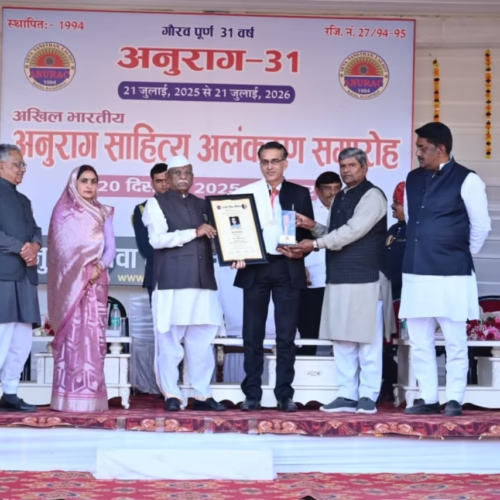
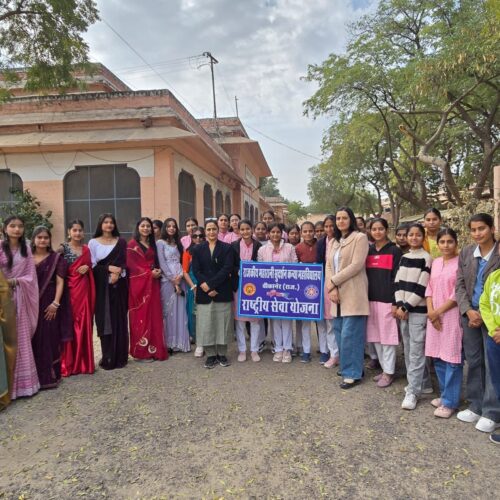



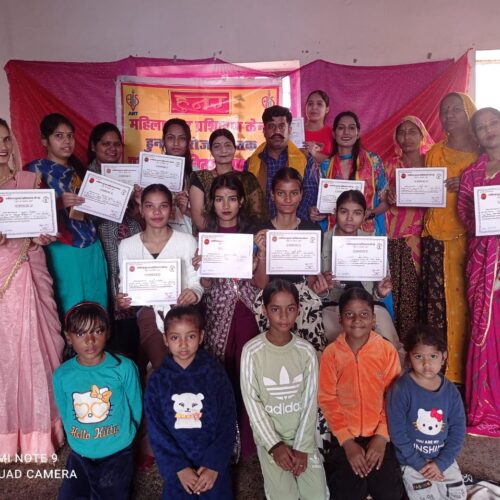
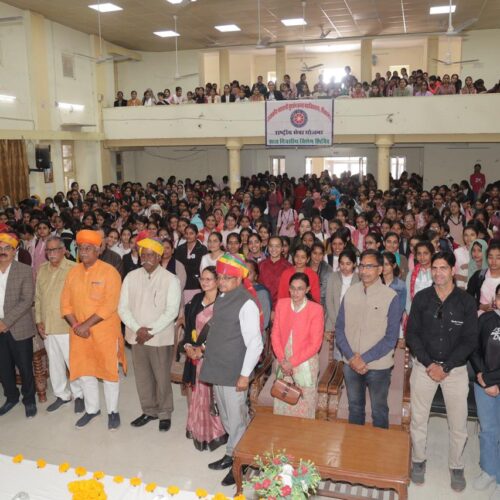

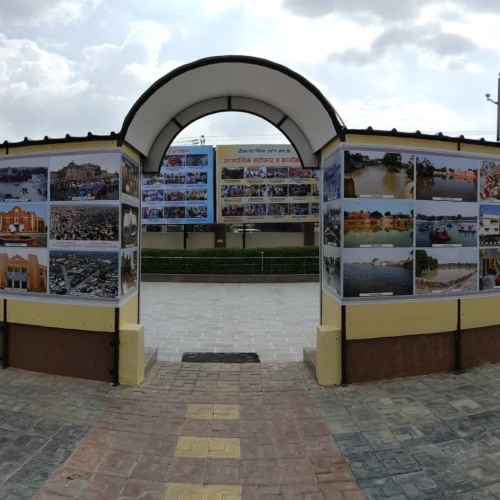
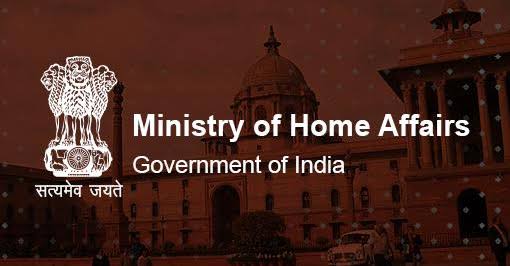





Add Comment